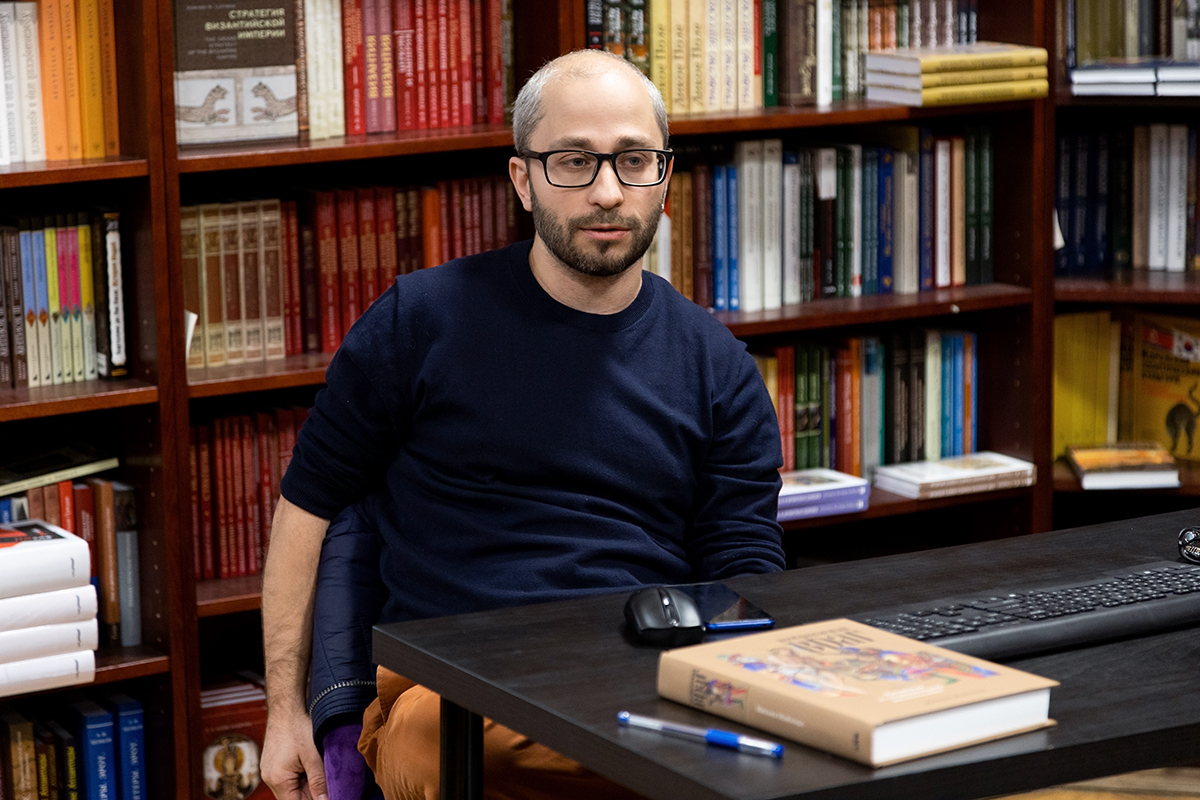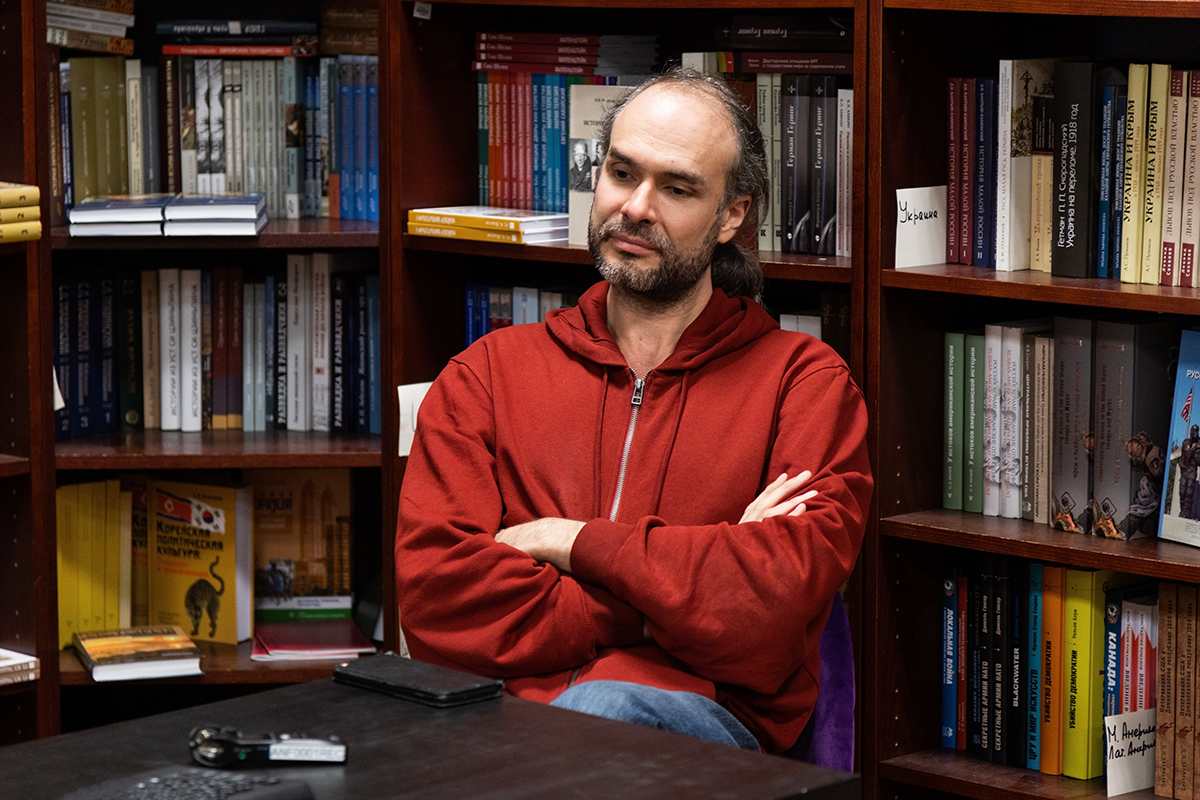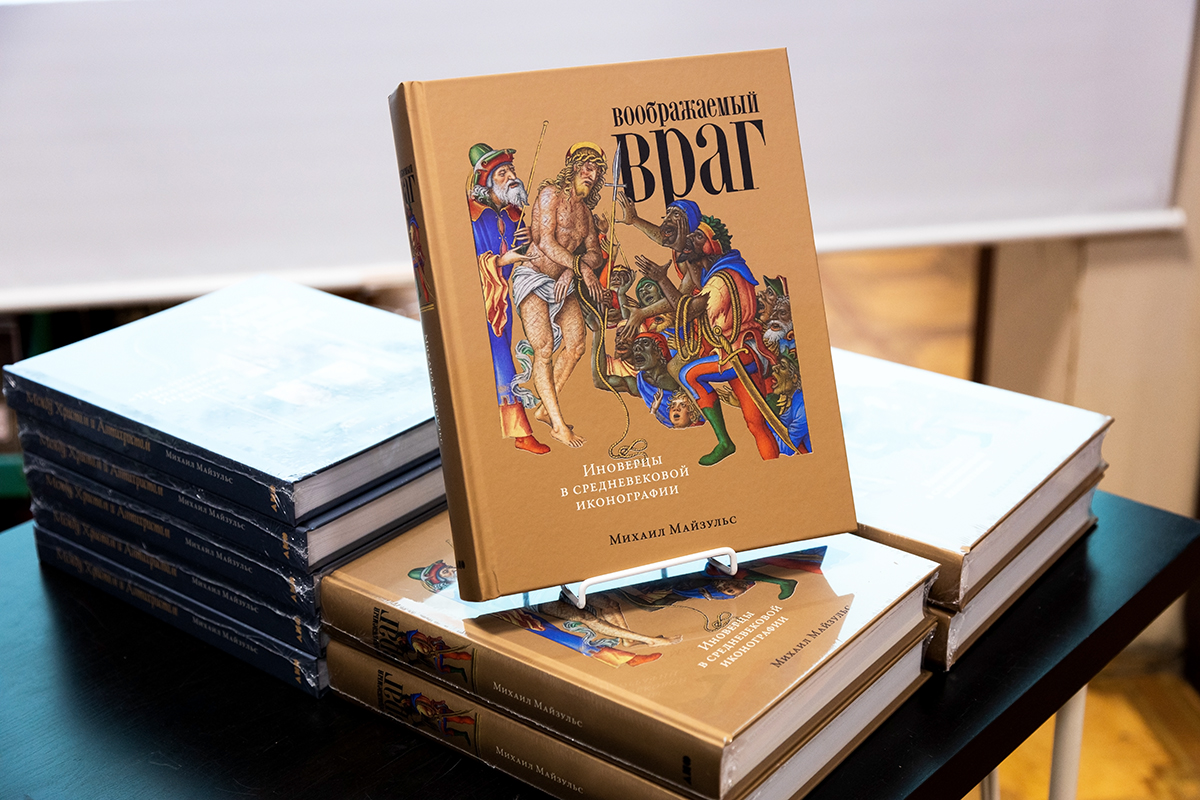On April 8, “At the Centaur” hosted a presentation of the book “The Imaginary Enemy. Non-Christians in Medieval Iconography” by Dr. Mikhail Mayzuls, a researcher at the Center for Visual Studies of the Middle Ages and Modern Times of RSUH.
On April 8, “At the Centaur” hosted a presentation of the book “The Imaginary Enemy. Non-Christians in Medieval Iconography” by Dr. Mikhail Mayzuls, a researcher at the Center for Visual Studies of the Middle Ages and Modern Times of RSUH.
In the book, Dr. Maizuls shows how, from the 12th to the 16th centuries, the image of the enemy was formed.
According to the author, in the art of the medieval West, many signs were used to mark and denounce non-believers, heretics, other sinners and outcasts.


“These are coats of arms and flags depicting scorpions, exotic turbans and caps, hooked noses, red hair and viciously aggressive grimaces. That is how they labeled non-believers. They were related with the "father of lies", the devil, as well as correlated with each other, as if they were part of a global conspiracy against the Christian society," Mikhail Romanovich noted during the presentation.
The author also said that pagan Romans had sometimes worn Jewish hats and had pseudo-Jewish inscriptions on their clothes, Jews in Muslim turbans, and Muslims themselves had been accused of worshiping idols and calling on the ancient Roman gods.
Dr. Mayzuls also demonstrated the collective image of the enemy in medieval iconography.
The author spoke about how stigmatization mechanisms had worked on the streets of cities, as well as how the techniques that had arisen in the Middle Ages have turned into pamphlets, posters and caricatures of the New Age.
